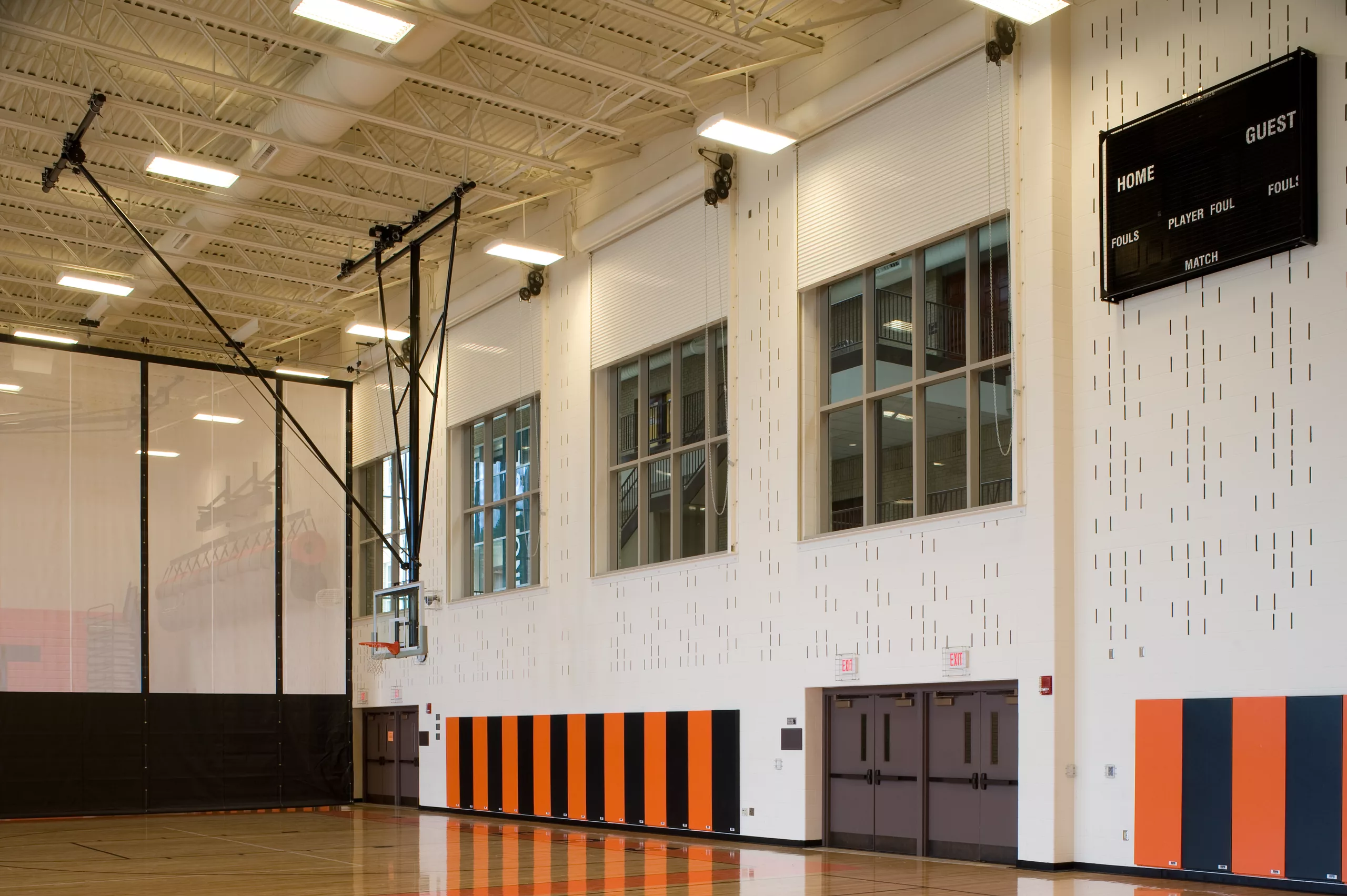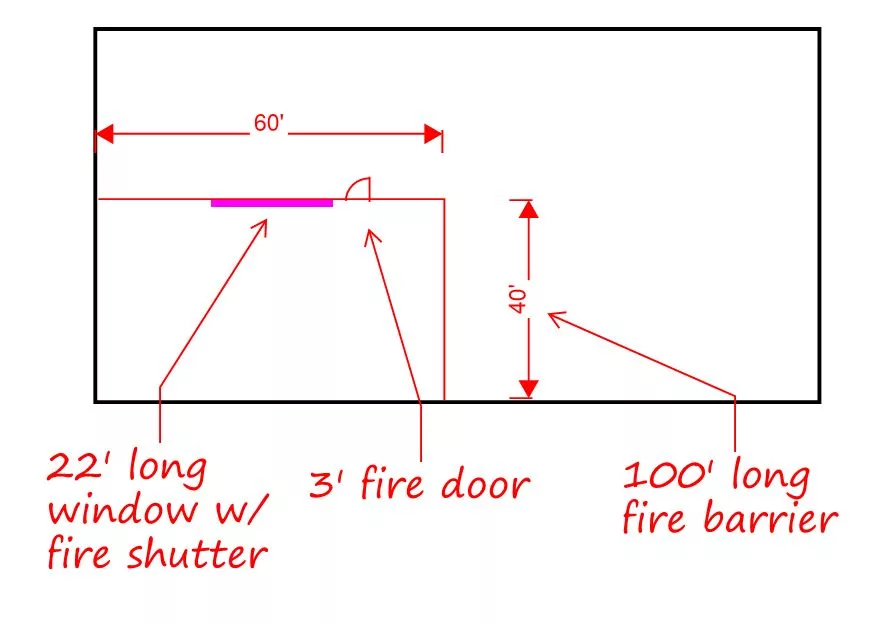There are several instances when you may be required to have a fire resistant wall between two areas or rooms within a building. One of the most common reasons for this would be two different occupancies that require a fire rating between them. For instance, an H-3 (High Hazard) occupancy adjacent to an A-2 (Assembly occupancy). This might be the case in a distillery where you have a tasting room adjacent to a distilling room, where the maximum allowable quantities of flammable liquid are exceeded.
So, assuming there is a fire rated wall required, what do you do if you want to have a window opening in this wall? This is commonly the case in a tasting room to distillery, because we often want guests to be able to have a view of the production and the equipment.
There are a few options for providing an interior window in a fire barrier wall:
Option 1 – Provide a standard window, with a roll down fire shutter over top
This option can be pretty economical. It involves a standard window, typically aluminum frame or steel frame with a single layer of glazing. Nothing abnormal here.
But, in order to gain fire protection, you can add a roll down fire shutter over the top of the window. This device has a fusible link that melts at a certain temperature and lowers the protective shutter in case of a fire.

Keep in mind this shutter will be open at all times, unless there is a fire. While this device is not the prettiest, it can often be put on the less visible side and not really seen. We can also hide this in the ceiling or soffit.
The limitation with this option is length of window. IBC 707.6 mandates that openings in a fire barrier are limited to 25 percent of the length of the wall. The length of the wall being the length of the fire barrier. For example, if a fire barrier wall is 100 feet long, then you can have 25 linear feet of a window/ opening with a fire shutter. This includes doors, so if there is a 3′ wide door, then there can be a 22′ long window, for a total of 25′ of openings. . There is no limit to the vertical height of the window.

Option 2- Fire glass
If you must exceed 25 percent of the length of the wall as mentioned in option 1, then you have some other options. One of them is fire glass. This might also be an option if you don’t want to see any sort of fire shutter.
Sounds great, right? The caveat. Its very expensive. This is one brand that makes these kind of windows:
www.fireglass.com
A very rough order of magnitude is about $275 per sf of fire glass window installed. For example. an 8;x10′ window would be 80 sf x 275= $22,000. By comparison, an 8×10 normal window would be about $2,000 plus about $9,000 for a fire shutter. So, roughly half the price. But, if you have a smaller window and/or want a more seamless look, fire glass may be worth it.
The fire glass must meet ASTM E119, which is a high standard for impact and fire rating. It is almost as if this glass is really an extension of the fire barrier wall. The PILKINGTON PYROSTOP from fireglass.com meets these standards.
Option 3- Sprinklered Glass
This option may be the most affordable, and attractive, especially if you already have a sprinkler contractor working in your space anyway.
This article explains this system: continuingeducation.bnpmedia.com/courses/tyco/window-sprinklers-as-an-alternative-to-fire-rated-glass/
There are special requirements for types of sprinkler heads, distances from glazing/ placement of heads, etc. But, these are usually easy to achieve. The glass must be metal framed, and cannot have any horizontal mullions. This is so that water can wash down the glass without obstructions. There must be sprinklers on both sides.
Now, the caveat with this system is that you must get special approval from your AHJ. The international code council (ICC) publishes documents called acceptance criteria, for approving special systems. ICC AC385 covers the requirements for this type of system. They also publish Evaluation reports, evaluating specific brands of systems. ESR-2397 is for this tyco system. These documents essentially are evidence to provide to your AHJ to help them approve a sprinklered glass assembly in a fire barrier wall.
Article By: Matthew Taylor-Rennert